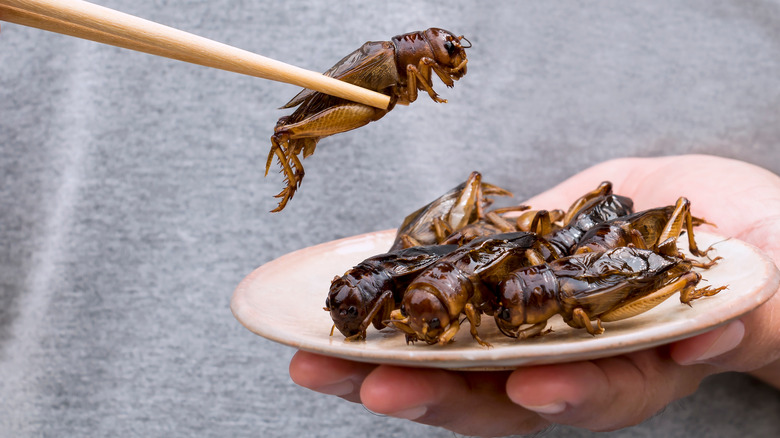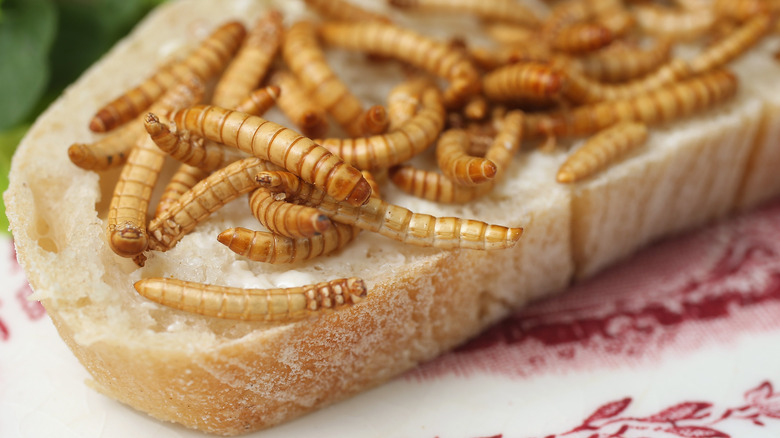Why Eating Insects Might Become More Common In The Future
It's no secret that the world is filling up faster than student night at your local bar. In fact, analysis conducted by The Lancet suggests that the global population could be close to 8.7 billion by 2100. Clearly, this poses huge problems about how a rising population can be sustainably fed.
With humans sprawling out across the land, a food source that takes up limited space is required — and, in a burst of good news for celebrity explorers and reality TV shows, insects have been proposed as a credible option (via The Independent).
One of the biggest benefits of utilizing bugs as a food source is the positive impact it could have on the environment. While the farming of animals for conventional meats is seen as a major contributor to environmental pollution (via Peta), insects are promoted as requiring less land, water, and feed than cattle, as well as emitting fewer greenhouse gases (via IFT). It is believed that replacing half of out existing meat supply and manufacturing with insects could create 1.68 billion hectares of land (via BBC).
Bugs are filled with nutrients that are essential for a healthy life
There's more science behind the eating bugs idea than simply popping out into your yard and plucking a handful of ants off the ground. The British Nutrition Foundation notes that insects can contain large quantities of iron, protein, and polyunsaturated and monounsaturated fats (although levels present in each species of insect can differ).
The UN's Food and Agriculture Organization has also produced nutritional information on insects eaten around the world. In the Netherlands, the migratory locust contains 179 calories, while Australia's green (weaver) ant weighs in with an extraordinary 1,272 calories. Even the United States shows its affection for eating bugs — Illinois's yellow mealworm larva holds 206 calories.
Research by the BBC concluded that approximately 2,000 varieties of insects are devoured every year, including in South America, Africa, and Asia. Munching insects is fairly common in Thailand, for example, where crickets, grasshoppers, and silkworms are frequently enjoyed (via FAO). As bizarre as it may seem, the days of burger joints and hot dog stands may well be numbered.

